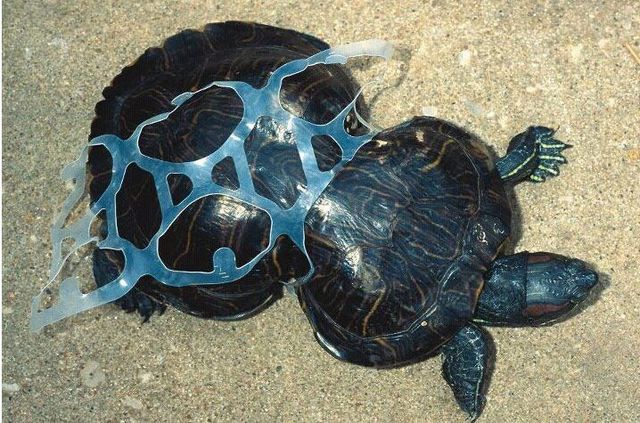Mind and Models
Introduction
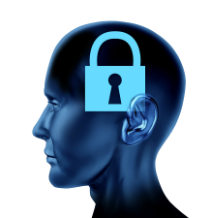
It isn’t much of an overstatement to say that we live in a world of models. For example, video is a two-dimensional model of 3-D actions and verbalizations. And our minds seem to operate to a great degree by forming and manipulating mental models. The main essay below attempts to show something about how all this works, because I think it’s both interesting and useful. Albert Einstein is quoted, after the atomic bomb exploded, as saying ““The unleashed power of the atom has changed everything save our modes of thinking…”.
Albert Einstein Quotes on Atomic Bomb
Further:
Albert Einstein War Quotations
“When men are engaged in war and conquest, the tools of science become as dangerous as a razor in the hands of a child of three. We must not condemn man because his inventiveness and patient conquest of the forces of nature are being exploited for false and destructive purposes. Rather, we should remember that the fate of mankind hinges entirely upon man’s moral development.”
He was saying that power and technology hadn’t moved the needle much on our consideration
of mental models.
An organized, multidisciplinary approach conducted by physicists, astronomers, and
mathematicians has built on Einstein‘s theory of relativity, and has added hugely to the
foundational “general relativity concepts” that Einstein conceptualized and described. This
coordinated effort has developed the frameworks for our current understanding of the physics
of the universe.
Even though technology and the internet have substantially modified our thoughts and our
experiences (especially by causing informational overload and providing a disturbing wealth of
false information), it appears that there has been no such organized, interdisciplinary approach
involving psychologists, philosophers, neuroscientists, artists, and poets, into exploring our
development and utilization of mental models (into changing our ways of thinking, which
Einstein was decrying).
What if we actually make a concerted, organized effort to similarly develop Einstein’s suggestion
to define and evolve the models we use in our thinking? Couldn’t that lead to a renaissance of
consciousness?
A major effort of our organization is to explore how we might develop Einstein’s suggestion to
dive deep and examine the models we use in our thinking. First, some background that I think
is important:
The overall pollution problem, not just global warming and ocean levels, but also ocean
acidification, the many forms of plastic pollution, the 80,000 +/- industrial products that are
completely unregulated except for about 500 of them, all pile on, creating a multifaceted
ecological crash that the human race is causing, similar to or possibly worse than the asteroid
that killed the dinosaurs and 75% of the living biosphere at that time. [The recently published
UN-commissioned report on species extinction agrees.]
There are now an unsustainable concentration of 7+ billion of us on the planet (uniquely vulnerable to pandemics and other distress), but this also represents an amazing level of human intellectual capital, allowing us a unique opportunity to problem-solve, if we can just get with it. Billions of our incredible human mental computers spend far too much wasted time on multimedia designed to distract or direct us, such Angry Birds, Candy Crush, Solitaire–or Grand Theft Auto–rather than paying attention to how our governments misbehave, or how we could solve environmental issues like global warming and the huge number of pollution factors mentioned above.
It’s no secret that our minds and ways of thinking are influenced substantially by targeted mass
media:
Manufacturing Consent
10 Ways the Media Manipulate Our Opinions Every Day
how-the-media-manipulates-you-without-your-knowing
With the world indelibly changed by the COVID-19 global pandemic, we are at a unique tipping
point: Will we be pulled in multiple panicked directions by various “authorities”, many of
questionable weight and validity, and by dueling governmental edicts; or will we be able to
draw together the many threads of information and disinformation out there, creatively
separate the wheat from the chaff, and generate a fairly comprehensive, accurate and up-to-
date predictive and operative model (always being updated with the latest data) to guide us to
the best outcome among the many that can be imagined?
Our “natural“ responses to the new technologies gestated and dispersed by the internet are
gifting us with a multiplicity of mental reactions. These include a shorter attention span, stress
related disorders, and far too many choices that allow us to move into a variety of fantasy-
inspired worldviews. This generates cultures that, for example, reject ethical behavior in favor
of getting ahead in any way possible: beg, borrow, steal, and mislead. All of these advance the
“new normal” behavior of those who are choosing and idealizing role models from the corrupt
top of the governmental and corporate food chain who employ vulture capitalism to enrich
themselves and their clans.
If we wait for nature to take its likely course and allow human traits like deception and
domineering to fragment our societies further, we will likely self-destruct before physical
“survival of the fittest” improves our gene pool, and before our spiritual evolution could have a
positive effect. Our best bet seems to be to actively investigate the science of our human
nature, and how we can employ flexible mental models to enhance our thinking and improve
the realistic nature of our behavior.
The operating system of a fairly basic computer from the 1980’s is far more effective than the
operating systems we use in our governments, including the U.N., because those are pre-
computer age. Emotion rather than intelligence seems to be applied…imagine what could
happen if we updated, and, in addition, employed Artificial Intelligence (AI) creatively in such
updating, for the greater good (if modeling can determine what that might be).
Einstein further said, “The solution to this problem is in the heart of mankind.” [I suggest that,
if we expand our mental models (ways of thinking), we will be miles ahead in creating a better
operating system for our thinking. Further, such a mental expansion process should provide us
with the conceptual software to convince us that we have a choice about using it with heart.]
And, acting with heart very much coincides with analytical “best practices” models to seriously
save ourselves and the planet by attending to important details. Heart directs us away from
our abusive, our warlike, our careless pollution, etc., etc., behaviors, exactly as does the
analytic WorldOpt “optimization” concept. Such correspondence between heart and analysis
gives hope that this is the most correct and direct, or, anyway, the most productive, direction to
explore.
WorldOpt wants to present and discuss a seed of new thinking, a seed that can grow the
mental models approach. To succeed, it must sprout and flourish on its own, and become a
leaderless thought revolution. We can encourage it to sprout in ourselves and our community
groups and then we can become Johnny Appleseeds.
We have had almost countless “wars”, on poverty, on drugs, against guns, etc., as well as over
14,000 named and historically detailed physical wars in the last few millennia (leave alone a
great many lesser, but violent skirmishes), and few have really proven successful. So force
doesn’t usually comprehensively succeed; the most hopeful thing we can conceive seems to be
a thought revolution, a renaissance of consciousness. With the proven general failure of wars
and oppression (the negative aspects of our human nature), moving towards the positive
expressions of our human nature seems to be the thing that can really work.
If we don’t launch a values-oriented societal operating system, developing cooperatively and
spreading virally, then it is clear that Artificial Intelligence will give potentially calamitous power
to people and organizations who don't have sustainability in mind, and who are effective at
overbearing control using even the means of murder and widespread warfare, with uncaring
pollution an unavoidable side effect.
About that tipping point: if we tip towards further crudity, bigotry, and top-down authoritative
behavior, with its dominating abusive energy (negative expressions of human nature), we will
be in a much bigger mess; whereas if we tip towards an intelligent optimizing operating system
with heart (positive expressions of human nature), we can clean it up. After all, this is our
Garden of Eden.
Looking forward optimistically,
Richard
Easter Sunday, April 21, 2020
Read “Mind and Models” to understand and expand your mental models. When you bump into something that you didn’t see, your mental model of the world around you was deficient. Leverage this example into a broader understanding of how mental models work in everyday life, and the part they play in the very destructive identity politics including the “weaponization of ridicule” so commonly engaged in today
MIND AND MODELS
© 2018, 2019, 2020: Richard Stancliff and WorldOpt Institute
Without delving too deeply into philosophy or religion, but relying on our experience of the world as we generally agree that we perceive it, a fact that’s almost as unarguable as “I think, therefore I am” is this: We are a few feet tall in an infinite universe, with a brain the size of a cantaloupe (so how much can we REALLY know?), and with an ego the size of an elephant. Although elephants,

if trained, can be great teammates, if untrained, they can storm and trample on everything and everyone in sight. An important piece of “housebroken” human behavior lies in training our elephants, and I’ll want to discuss this further.
Valid science is, similarly, based on our experience, with “results” depending upon the experimental testing of ideas in a manner that gives us reliable and reproduceable “real world” phenomenal results. Without excessive semantic nit-picking about the meaning of words (“…it all depends upon what the meaning of the word ‘is’ is…”), we can only get somewhere with written and verbal communication if we agree to just “follow along” to allow arguments and proposals to finish their trail, and understand to the best of our ability, the thrust of such communications. The foundations of language and experience are fairly secure (we can discuss—or argue—these elements later, after doing our best to comprehend the messages).
So, returning to the cantaloupe: modern biochemistry and neuroscience piled upon millennia of anatomical and functional observations fairly tightly inform us that we have billions of cerebral neurons and supporting cells and structures that are encased in a hard skull providing both protection and isolation from the outside world. The skull sports a few holes through which input is received and processed (and, of course, a hole for output, which is all too often carelessly used). The senses that we recognize and have studied respond only very partially to the universe of energy that’s “out there”; for example, vision represents a very short band of the electromagnetic spectrum, and hearing responds to only a small range of sonic frequencies, etc.
Few of us would deny that there are some other forms of communication or perception that we have or can sometimes have with the wider universe, in addition to the several defined and studied senses. Without trying to throw too many curve balls here, I may at least
 reference ESP and religious experience. The energies of the universe that reach us in these ways contribute to our “world view” (broadly, our concept of the universe and of religion) in a manner that interacts with our social and cultural conditioning in a potentially fluid and evolving manner having both personally unique and culturally common components (unless we become “locked into” a world view that fails
reference ESP and religious experience. The energies of the universe that reach us in these ways contribute to our “world view” (broadly, our concept of the universe and of religion) in a manner that interacts with our social and cultural conditioning in a potentially fluid and evolving manner having both personally unique and culturally common components (unless we become “locked into” a world view that fails
to sufficiently accommodate change and growth). Such world views probably represent the most comprehensive models that our brain structure and neurophysiology can consciously create (or co-create) and support.
It’s important to study models for many reasons. Regardless of whatever else our brains do, they generate and utilize models of many varieties, and we direct computers to do the same. Models can be descriptive and predictive, and can greatly assist us, or alternatively (if the models are wrong, or, worse, malignant) can degrade and destroy us, individually and mutually. We have considerable ability to investigate our operative models, and are able to choose positive and reject negative models; but only if we choose to introspect sufficiently and study how our human nature works and can be operated positively, or alternatively can be coopted into wasteful or negative and destructive behaviors and goals. Broadly speaking, this is a function of “conscience”, but a full examination of our operative mental models gives us range, scope, understanding, freedom of motion, and the ability to evolve within and surrounding our “conscience”. There seems to me to be little else that is so important in saving ourselves and each other, in rescuing our society and our planet.

So let’s delve further into models. Generally, models are oversimplified of necessity (to fit into our brain space) and for utility (so that we can “work” on a smaller-than-the-universe representation of whatever we may model); and furthermore, models are generally incomplete and not capable of suggesting all interconnections and influences: they are fuzzy. Exception: mathematics. 1 + 1 = 2 is a model that accurately and completely fits any two like-kind or similar-kind “real” objects.
It appears that mental models may be of several kinds: fully and physically analog, visually holographic, or conceptually abstract (other varieties of models may be discussed elsewhere). Anatomically in our brain, there are proven examples of approximately one-to-one mapping of function into neuroperception. Called a “homunculus”, there is an actual map of body parts in the sensory cortex where our brain neurons are laid out in a manner that corresponds to body parts and locations that actually resembles a drawing of the body, so that a touch on the right hand, for example, causes activity in brain neurons in exactly that area of the sensory cortex. (In fact, this is exactly how the sensory homunculus was mapped during open-skull brain surgery.)
Below is a drawing of the precise areas of the human brain’s sensory cortex showing the brain areas associated with each body part, from Ganong’s Review of Medical Physiology. A cartoon-like drawing above the brain areas shows how the body parts are aligned in an organized “body-like” manner. I consider this to be a definitive example of an analog model operative in our brains.
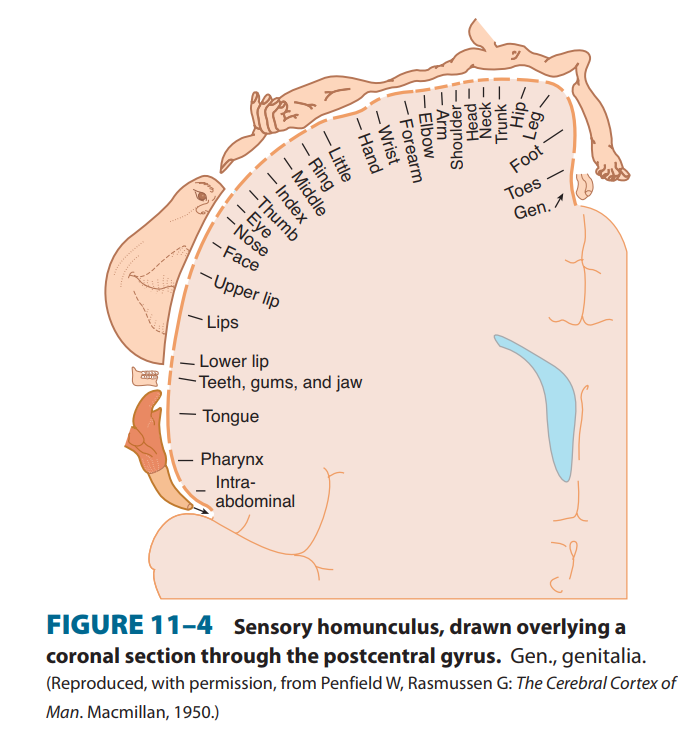
Another example of mental models is the creation of three-dimensional mental geographical or spatial maps that we use to navigate our world (or with which we play, for example, three-dimensional chess). These can be very visual, or can operate in the background without much visual manifestation. Those who are blind from birth demonstrate very partial spatial understanding, in other words, very rudimentary and inexact internal maps that they can call upon for location and navigation. Their maps are derived from feeling their way around, tapping with a cane, and by being led by those with vision. Those of us who are sighted can internalize geographical models in great detail because we can see miles down streets, go up and down mountains and view miles of terrain (or look out an airplane window at 30,000 feet), and navigate stairways inside buildings; we can “retain” (or re-create as needed) a detailed, 3-D model of areas we are familiar with. But put us into a new location, and we must build new navigational models. Note that these models are predictive, because we can predict where in the “real world” we will end up if we make certain turns or take new short cuts. Further, these models are often “not to scale”, and operate in large fashion via landmarks and other memorabilia. Nor are these models usually invoked in their totality: when we are in Los Angeles and trying to get to the corner store, we do not usually think of streets we know of in San Francisco, nor do we call up a global image of all the places we’ve been, locate them on our model of the globe, and then zoom 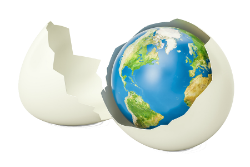 in to the L.A. area. This points to one of the characteristics (limitations, if you will) of models (mental or computerized): when utilized piecemeal to reach a “destination” (of location, or more broadly, of a “conclusion” of some modeled thought process, or of political or philosophical argument), they can be tangential to, and almost removed from, a larger perspective (but they “get you where you want to go locally”). In humor, or debate, or war, we are pitching metaphorical smiley-faces, or rocks and hammers (or bullets, etc.) at each other, which are representatives of our individual, compartmentalized, and (conveniently- or inconveniently-restricted) partial models (of values, or of dominance, etc.). When we look at all of the “rocks” in our mutual area, they are portions of a larger landscape, which can become either a battlefield (if we search with aggressive intent for weapon-sized missiles) or the site of a creatively beautiful rock garden, terraced for planting (if we cooperate in creativity).
in to the L.A. area. This points to one of the characteristics (limitations, if you will) of models (mental or computerized): when utilized piecemeal to reach a “destination” (of location, or more broadly, of a “conclusion” of some modeled thought process, or of political or philosophical argument), they can be tangential to, and almost removed from, a larger perspective (but they “get you where you want to go locally”). In humor, or debate, or war, we are pitching metaphorical smiley-faces, or rocks and hammers (or bullets, etc.) at each other, which are representatives of our individual, compartmentalized, and (conveniently- or inconveniently-restricted) partial models (of values, or of dominance, etc.). When we look at all of the “rocks” in our mutual area, they are portions of a larger landscape, which can become either a battlefield (if we search with aggressive intent for weapon-sized missiles) or the site of a creatively beautiful rock garden, terraced for planting (if we cooperate in creativity).
Our “real world”-mimicking mental models interact in smooth fashion with sensation, to allow us to create trajectories for our motion between and among objects in the world. We visually perceive objects in front of our path of motion, and learn to adjust our motor activity accordingly to reach our destinations. We can observe the evolution of the coordination between motor activity and mental models in babies learning to crawl here or there, and encountering objects to navigate around, or in beginning drivers learning how to manage high-speed trajectories: the learning process often involves poor calculations, even collisions, as models and as coordination co-evolve. We use these models to operate in the “real world”, predicting outcomes of certain actions, and generally being correct. We wouldn’t be alive if we couldn’t predict the flow of traffic while crossing a street.

Nonetheless, we fairly frequently miscalculate, dropping objects, or colliding, thereby finding that our model of perception-to-action was faulty on frequent occasions. We call those “oops” moments and generally realize that we’re imperfect; but understanding that these can be failures of our mental models is important to the picture I’m trying to draw. I thought the glass was there, but really it was half-an-inch further, so oops, I spilled. More importantly, we can notice that we “collide with reality” in cases where our mental model is incomplete: the waiter placed the wine on our placemat while we weren’t looking, and then our elbow knocks it off the table. This is a case of our mental model of our area being incorrect because we had not updated it to include the latest reality. The practical joke of moving someone’s chair just before they are about to sit down, is an example that takes advantage of our inability to constantly update our mental models to “correctly” correlate with external reality. IN SUCH CASES, OUR MODEL OF REALITY IS WRONG, AND IS PROVEN BY REALITY TO BE WRONG. THIS IS VERY INSTRUCTIONAL ABOUT HOW OUR MIND WORKS WITH MODELS.
Memories are apparently models, too. And they have been shown to be very distortable and may be of low fidelity. Just as our geographical models operate substantially from landmarks rather than from fully detailed pathways (so in making our way from place to place, we may be surprised how soon we reach a certain turn, or alternatively how much longer it takes “than we remembered”–which really should be stated “than we reconstructed”), we can see that our memories are based on key events or sequences which we may later reconstruct in a faulty fashion.
A friend described a survey that was taken several years ago, quizzing older individuals who remembered the Pres. John F. Kennedy assassination. When asked, most people remembered where they were (and the time of day) when they first heard the news. And when asked when they saw the limousine view of Kennedy being shot, more than half of them said that it was that evening on TV. Well, that was the old days, and although there was plenty of on-location TV reporting about the assassination that evening, the only image of JFK actually being shot was captured on an 8mm home movie, which had to be shipped to a lab and developed, then shipped back before the owner of the film could confirm that he had the only record of the incident. It was shown on network TV about a week later. So this indicates that memory is, at least in large part, a “record” of landmark events (when/where we heard the news, and seeing the footage of JFK collapsing). The “memory” of same-day events was RECONSTRUCTED from these landmarks. These days, of course, with instantaneous reporting, we WOULD indeed  see the event on TV within minutes of the actual event. So memory mostly seems to be a collapsed series of landmark events rather than a true video-like recording of a full sequence, not even a truly “compressed” representation (like a data file); in other words, it is a model that requires reconstruction (often faulty) to “replay”. (Those with photographic memories may construct their models differently, I guess.)
see the event on TV within minutes of the actual event. So memory mostly seems to be a collapsed series of landmark events rather than a true video-like recording of a full sequence, not even a truly “compressed” representation (like a data file); in other words, it is a model that requires reconstruction (often faulty) to “replay”. (Those with photographic memories may construct their models differently, I guess.)
Now, this description of making internal mental models representing the “real world” reflects a particular model of how our brain functions within our “body-mind” complex, and in relation to the “outside world”. This description involves a fairly isolated system with rather defined inputs, in conjunction with or followed by internal processing, with “chosen” outputs. “Chosen” is a word that reflects the possibility of “free will”, but doesn’t eliminate the possibility of a mechanistic or (especially) a habitual output. (Chosen by us, chosen by habit, or chosen for us?? Or a mix??) In addition, when we complicate the discussion with the obvious factors of reflex reactions and instincts, of emotions and imagination, and of consciousness and of moods (having many different levels and complexity), and potentially with many other factors with which our mental models interact (or may interact), the ability to speak clearly about definitive mental models is weakened (but for this discussion, it’s what we’ve got).
“Other factors” includes, of course, the effects of energies from the wider universe (some may call it God) and such things as a more defined ESP function or functions. Who hasn’t, for example, experienced an internal certitude concerning something about to occur that  would otherwise be unknowable? Or “simply” the Wonder Of It All? The extent and timing with which many energies of the universe(s) may interact with our cantaloupe-sized brain is hard to model, and realistically can only be guessed at. But such is (or at least may be) involved, and should be factored into the considerations we make via utilization of our mental models. Such universal energies or inputs may generally be available should we choose to involve such a bigger picture (or maybe they might not always be available).
would otherwise be unknowable? Or “simply” the Wonder Of It All? The extent and timing with which many energies of the universe(s) may interact with our cantaloupe-sized brain is hard to model, and realistically can only be guessed at. But such is (or at least may be) involved, and should be factored into the considerations we make via utilization of our mental models. Such universal energies or inputs may generally be available should we choose to involve such a bigger picture (or maybe they might not always be available).
When we choose NOT to involve all available facts, our operative mental models can become so limited as to be marginally useful, and/or so wrong-headed as to be partially or largely detrimental. When we choose to invoke a partial or otherwise flawed model involving a specific view (if such is our current model) of morality to guide and justify our misbehavior, we err in this manner. Further, it is a human proclivity to employ self-righteous religious models to reinforce themselves in a self-fulfilling manner. Hence we may have “Christians” who (to my mind, hypocritically) sin repeatedly in the same fashion, but ask God repeatedly for the same forgiveness and are confident that they receive it every time.
So we see our brains forming many levels of models (“sub-models” ranging from an actual map in the sensory cortex, to representational sub-models such as navigational maps and, for example, workplace behavior; then expanding to models of philosophy, religion, politics, etc.; and finally compiling into a “metamodel”, or worldview). Our worldview thereby becomes a chimera of different types of models: Our sensory perceptions, our geographical and other spatial models, our relationships, our professional conceptual models and all other learned intellectual and behavioral models, our goals as sometimes expressed as “the power of positive thinking”, our sexual desires and fantasies and other fantastical models, some of which may have bases in ESP or other valid “intrusions” of the universe or universes into our consciousness (or into our subconscious as intuition). Almost all these models contain errors, included either by mistake, or, perversely, sometimes on 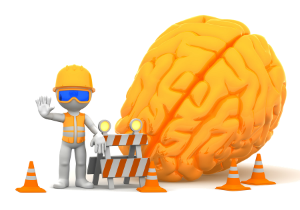 purpose to reinforce prejudices or desired outcomes. Luckily, no matter how fixed, inflexible, and opinionated we may be, our models are still subject to and available for retrofitting to accommodate a more expansive, and therefore “better”, view of reality. Almost any of us arriving at the wrong place can say “oh, it’s really down that street and not this street”, and modify our geographical model accordingly. It is important to comprehensively understand that we can similarly modify and expand the mental models that underlie so many of our habits or persuasions, such as workplace behavior, or philosophy, or politics, and similarly comprehensively expand our worldviews. We therefore have the ability to reconstruct our fixed, tribal, frequently ego-based and often vitriolic identity-political opinions (models of course!), and consider re-instituting appropriate impulse control to re-civilize ourselves.
purpose to reinforce prejudices or desired outcomes. Luckily, no matter how fixed, inflexible, and opinionated we may be, our models are still subject to and available for retrofitting to accommodate a more expansive, and therefore “better”, view of reality. Almost any of us arriving at the wrong place can say “oh, it’s really down that street and not this street”, and modify our geographical model accordingly. It is important to comprehensively understand that we can similarly modify and expand the mental models that underlie so many of our habits or persuasions, such as workplace behavior, or philosophy, or politics, and similarly comprehensively expand our worldviews. We therefore have the ability to reconstruct our fixed, tribal, frequently ego-based and often vitriolic identity-political opinions (models of course!), and consider re-instituting appropriate impulse control to re-civilize ourselves.
We often employ limited, partial sub-models in interaction with our elephant-sized egos. The ego is properly a healthy component of human behavior that guides our awareness of self in relation to outside interactions. But ego is easily “elevated”, if we can call it that, to a distorted level of participation in the spectrum of our mentation that results in an unhelpfully- or downright harmfully-expanded and dominant ego-expression. Just as the (hard-wired) homunculus is a “distorted” image of the body with expanded representation of hands (because of their detailed sensitivity and multiplicity of uses), so, in our (at least partially) software-derived “picture” (model) of ourselves in relation to others (and possibly also to our view of God), our ego function is often magnified in our modeled “picture” of “ourselves in our world”.
We can see the elephant ego interacting with people’s partial mental models when we observe politicians or “talking head” experts of practically any stripe presenting “the facts” (as they see them in their particular mental construct of their topic). They explain portions of their model and draw upon facts (which often, upon examination, can turn out to have limited applicability in certain ways, or in some cases be fabricated “false news”), but the limitations of the “facts” are not often presented. We can often see them conducting their spiel, whatever it may be, in an authoritative, emphatic, even emotional manner, as if they have a lock on reality instead of as if they simply have a mental grasp of a possibly worthwhile model to examine.
 This observation doesn’t mean that there are never any supportable facts behind the positions that people take; I only want to point out that so many of us do not recognize the limitations of the mental models that inhabit us, and so we feel convinced (until, sometimes, a contradiction slaps us in the face and we understand that the model we are enamored of needs correction or expansion). It seems that, pretty much, all of our mental models are works in progress, and correction or expansion can only help us. Understanding the limitations of our mental models, and their perceptive and projective/imaginative components, is crucial to using them in the best way possible. We are lucky that this is software-enabled modeling, because it allows us to restructure such pictures and regain better balance. It is important to keep our limitations (six feet tall in an infinite universe) firmly in mind, as well as our potential, so that our plans and actions will be their most realistic and effective.
This observation doesn’t mean that there are never any supportable facts behind the positions that people take; I only want to point out that so many of us do not recognize the limitations of the mental models that inhabit us, and so we feel convinced (until, sometimes, a contradiction slaps us in the face and we understand that the model we are enamored of needs correction or expansion). It seems that, pretty much, all of our mental models are works in progress, and correction or expansion can only help us. Understanding the limitations of our mental models, and their perceptive and projective/imaginative components, is crucial to using them in the best way possible. We are lucky that this is software-enabled modeling, because it allows us to restructure such pictures and regain better balance. It is important to keep our limitations (six feet tall in an infinite universe) firmly in mind, as well as our potential, so that our plans and actions will be their most realistic and effective.
It’s important to be careful about where we direct our attention. Attention is one of our most powerful mental tools. We can place it on achieving our goals, and generally learn how to succeed at them (whether our goals are healthy, unhealthy, virtuous or vicious). We can spend our time working on useful endeavors (say, educating ourselves and others to reduce pollution to save our environment), vs. wasting time (perhaps spending a weekend watching sports and drinking beer, which of course can have redeeming “fun” aspects; or playing solitaire, Angry Birds or Candy Crush), vs. specializing in, and perfecting, destructive activities and values (via, say, Grand Theft Auto; blatantly sexual videos where sex is emphasized over true love and caring; child porn; violent videos; or via idolizing and emulating our corrupt government and corporate leaderships). With our attention, we can tune in to our creative conscience and sense of fair play, or attend to opposite, ego-driven dominance behavior, or corrupt or morally reprehensible behavior.
We are subject to a wide variety of moods as various sub-models gain our attention and are part of driving our spontaneous feelings and behaviors. Our moods roll on; it helps if we can observe and understand them. Our moods and variable models can interact in spectacularly creative or destructive ways, often in conflict with each other.
In different moods we weight different models differently. And for shorthand convenience, we continually employ shortcut versions of the models we actually have constructed. Yet we sew all this together “below the conscious level” and act (and feel) as though it’s seamless.
 Further, our attention often wanders or is captured by random events so that is often difficult to stay “on task”; we experience one distraction after another stitched together with more of an illusion of continuity than is often warranted.
Further, our attention often wanders or is captured by random events so that is often difficult to stay “on task”; we experience one distraction after another stitched together with more of an illusion of continuity than is often warranted.
When we realize what clunky partial models we sometimes throw together to reach any particular “understanding”, and realize how our “understanding” can change (even with our mood, or, better, by allowing “the light in”, which tweaks one or more of our models), we may see how challenging it can be to maintain a healthy balance and consider at least several alternative variant possibilities of any event or any conclusions. Encouragingly, with introspection and with intent on “staying focused”, we can learn to reduce distraction and increase learning and effectiveness.
Our moment-to-moment experience is a mix of perception and projection. Given that we don’t know how much of what we “know” is actually wrong, and how much projection there is in our intuition about others, it shouldn’t surprise us that we can leap to false conclusions. To restate: Understanding the limitations of our mental models, and their perceptive and projective/imaginative components, is crucial to using them in the best way possible. With so many leaps to partial or false conclusions happening to so many of us in the political sphere lately with vanishing civil restraint, it is little wonder that we are in a verbal civil war. Further, politics these days seems to be the area where we are most likely to employ selective use of boundaries in contriving that our functioning mental models are restricted to the dogmas we prefer. There are many fields of “information” out there, mostly composed of a mix of fact and fiction (“false news”). It takes a great deal of work to vet each factoid regarding its level of truth or fiction, and much easier to consider stuff that fits inside one’s boundaries as truth, and stuff that’s outside of one’s preference as “false news”, which reinforces the boundaries. Such a careless habit plays hob with attempting to expand one’s models toward greater inclusiveness and accuracy, and increases the heat with which polarized, opposing political sides engage each other. And, the act of of “preferring” mental models engages the emotions moreso than many other operating models we use, such as mapping discussed above. So if or when models of this nature are challenged, it goes deep into the phyche and generates fear and anger. Again, we have the possibility of substantial control, and can introspectively detect such deformed models and begin to correct them, while dialing down the heat.
Introspection is the tool with which we discover our operating models and can begin to revise them. Even at their worst, where our emotional life and health may resemble a jungle (complete with rampaging elephants and other predatory wild animal “personalities” with which we can confront those with whom we may have or may create differences), a jungle which contains cesspool pits of rotting, vile emotions and wild growths of poisonous plants, we can at least begin to understand it and to make changes by redirecting the flow of emotions and speculations; we thereby can stop filling the pits with more rotten garbage, we can purge the weeds and begin to create a beautiful garden within our emotional landscape. Fortunately, there are guidelines that can be used during such a transitional journey; and the first challenge is how to be convinced that this process of modifying our operating models is hugely important to our true happiness and the well-being of our world around us and the people in it. How can we sell (to ourselves and to others) the need to study and understand our human nature in order to take control of the waste and negativity that our operating models entrain so many of us into so much of 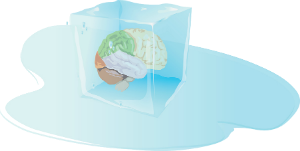 the time? If this kind of education can take hold and become at least a little bit viral in its spread, then maybe we can reach a tipping point moving us towards social and ecological sustainability. If a movement like this cannot spread, I believe it will be much harder to reach sustainability.
the time? If this kind of education can take hold and become at least a little bit viral in its spread, then maybe we can reach a tipping point moving us towards social and ecological sustainability. If a movement like this cannot spread, I believe it will be much harder to reach sustainability.
Delving into more examples of models, values can be considered a set of models. Label them A, B, C, etc. Consciously or subconsciously, these could reach Z or more.
Value A might comprise “be fair to myself and others“. Value B might comprise “keep your promises“. value C might comprise “don’t hurt others“.
There can be inconsistencies between them such that “being fair to myself”, for example, might actually entail hurting someone else, under certain circumstances according to limited models of A, B, and C.
It’s especially easy to ascribe different values to other people, even if they feel they have the same values. Especially, for Value A in this example, individual people may conclude that “being fair to myself” gives a different result for each person who claims to have the same values. Without a full examination of the operation of Value A within ourselves, and a forthright and transparent discussion of Value A with any other individuals involved in an interaction, misunderstanding and disagreement are very likely. If we don’t back up a bit and examine the operative values (models), we risk hurt, fear, anger, and of course, eventually war of some kind (economic, racial, class, boots-on-the-ground, or nuclear). This is why an objective understanding of the operative models (or partial models) is so important (as objective as we can be, which we must understand is also partial—and therefore give some slack to others as they examine and try to objectify their own values).
I am not trying to suggest how a full meta-model of our worldview would or should look; I am at this time only trying to describe many of the operative components (models or sub-models) thereof. Our sexuality is of course central to our human nature, it operates both innately and habitually, and is subject to being employed over the full spectrum of “good and bad”.  It interacts in many complex ways with our ego and our worldview, and gets involved in all kinds of drama and weirdness if we let it range in an uneducated and uninformed manner. Sexuality can be employed “as intended” (to use or misuse the phrase anthropomorphically) in a loving and creative fashion, both procreatively and recreationally; or we can employ our attention in our internal sexual arena to become creatively abusive and harmful. I may mention widespread “male privilege” and the recent #MeToo movement in this regard, as well as the many instances of sexual bondages and other malpractices of human nature.
It interacts in many complex ways with our ego and our worldview, and gets involved in all kinds of drama and weirdness if we let it range in an uneducated and uninformed manner. Sexuality can be employed “as intended” (to use or misuse the phrase anthropomorphically) in a loving and creative fashion, both procreatively and recreationally; or we can employ our attention in our internal sexual arena to become creatively abusive and harmful. I may mention widespread “male privilege” and the recent #MeToo movement in this regard, as well as the many instances of sexual bondages and other malpractices of human nature.
Our human nature has a proclivity towards reinforcing its current models by “allowing in for consideration” only such (partial) “information” as is mostly consistent with those models. We can easily become “locked into” a position and we can reinforce the mental box in which we have chosen (or have been conditioned) to live…unless we employ an active awareness of this bias and allow some “thinking outside the box” (which of course eventually expands the box into a more accurate, and therefore usually more tolerant, multi-dimensional construct which is no longer box-shaped).
We feel that we have a worldview, but we don’t even know what conversation is going on at the next table. What we really have is a person view of the world, which is much different. Understanding the limitations of our mental models, and their perceptive and projective/imaginative components, is crucial to using them in the best way possible. If we take our true and balanced place in our families and communities, in the world, and in the universe, we will be less likely to fall for the corruption, false news, ego driven mania, and other malfunctions of our society and of our human nature. (That is really the point of this essay. Consider “Mind and  Models” as a discussion of foundational prerequisites to most of today’s discussions. If each such discussion were made into a movie, “Mind and Models” would be a suitable prequel.)
Models” as a discussion of foundational prerequisites to most of today’s discussions. If each such discussion were made into a movie, “Mind and Models” would be a suitable prequel.)
Attempting to more accurately place ourselves, we can observe “as above, so below” AND “as below, so above” in several levels surrounding our “ordinary experience”: from the microscopic (unicellular organisms) to organized cellular agglutinations (corals, Portugese men-of-war) to so-called “lower organisms” with specialized tissues (plants, flatworms) to vertebrates such as ourselves with both specialized tissues and organs…and more broadly on up to ecosystems, planetary systems, etc…and stretching the ends further, from sub-atomic particles up to the universe (or universes, as may be the case). Sub-atomic particles (waves or strings, should physicists please to refer to them that way) seem to “know” something about how to behave, which can be considered a form of consciousness; and behavior seems to exhibit more and more consciousness as we progress up the scale. Single celled animals, for example, “know” how to respond, positively or negatively, to light, and to respectively take up or expel nutrients and waste products.
How much brain does it really take to create, or enable, or serve as a focal point for the entry of, conscious energy or consciousness? The cooperation of individuals in ant colonies and in bee colonies, for example, points to an amazing sophistication. Besides the incredible individual consciousness in these tiny creatures, does this hint at a form of group consciousness? Birds clearly demonstrate what we interpret as love, in their bonding for life, and caring for their babies, and many act socially in large groups.
Monkeys and apes form cooperative/competitive tribes, elephants societies manifest in matriarchal groups, and marine mammals, such as  as dolphins and the recently studied whales, communicate in very complex fashions, clearly demonstrating enough sophistication to impute consciousness as a driver of their behavior. What owner of a mammalian pet can question that they have a form of consciousness? Even sharks have recently been shown to possess a complex societal structure.
as dolphins and the recently studied whales, communicate in very complex fashions, clearly demonstrating enough sophistication to impute consciousness as a driver of their behavior. What owner of a mammalian pet can question that they have a form of consciousness? Even sharks have recently been shown to possess a complex societal structure.
There is much to be said for the participation of some form of universal conscious energy as an unknown fraction between, say, 1% and 100%, of the consciousness we experience.
Addendum on Human Nature:
“…Human nature is shabby stuff, as you may know from introspection.”
–Peter De Vries– (But it doesn’t have to be!)
My belief (a model of course) is that, understanding more about the construction of models in our minds and perhaps a bit about how models fit into the operation of our human nature, we can choose the better aspects of human nature and forego developing the worst, both generally and for us as individuals, personally. Understanding that we focus or process much of our conscious (and, likely, subconscious too) energy through our mental models, we can see that it’s our choice which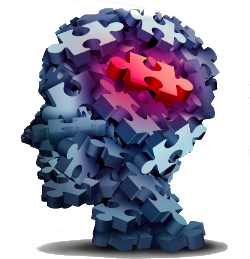 mental models we utilize in our thinking, and it’s our choice how and whether to “expand” them. When working, we utilize models reflective of our employment, for which we are paid (or for which entrepreneurs are “rewarded”—or not). In our free time, we can choose healthy interpersonal relations and build supportive and rewarding shared models; or we can creatively daydream and therefrom derive new or improved models for products or services; or we can essentially waste time, as mentioned above, with unproductive video games or other trivia of which life offers a plethora of opportunity; or we can perfect and elaborate harmful mental models that can inoculate ourselves against empathy and allow or encourage detrimental activity that’s clearly harmful to our environment and others around us, and ultimately to ourselves, such as thievery, excessive ego-dominance, warmongering for profit, and on and on.
mental models we utilize in our thinking, and it’s our choice how and whether to “expand” them. When working, we utilize models reflective of our employment, for which we are paid (or for which entrepreneurs are “rewarded”—or not). In our free time, we can choose healthy interpersonal relations and build supportive and rewarding shared models; or we can creatively daydream and therefrom derive new or improved models for products or services; or we can essentially waste time, as mentioned above, with unproductive video games or other trivia of which life offers a plethora of opportunity; or we can perfect and elaborate harmful mental models that can inoculate ourselves against empathy and allow or encourage detrimental activity that’s clearly harmful to our environment and others around us, and ultimately to ourselves, such as thievery, excessive ego-dominance, warmongering for profit, and on and on.
I’m taking another spin through this topic to re-emphasize that a comprehensive view of human nature like this can gradually liberate us from spending time on negative models and in negative energy; to do so we must learn to cut off the time and energy we spend mentally engaging negative models. This takes practice. First we must learn to recognize when we are wasting time in pleasant daydreams and refocus. Or, we must recognize when we are actively promoting the development of negative mental models which actualize negative behavior, such as, in the extreme, arming up and practicing for school massacres. These are useless or negative applications of creative energy. We then have the option of, at minimum, changing the channel to a “harmless or better” application of our attention and our creative energy. It helps to have a variety of interesting projects that merit deep involvement. Thieves can turn their imagination away from how to plan a successful mega-heist, and instead consider constructive activities. This 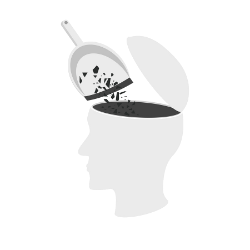 takes a bigger model, buying into “baking a bigger pie” instead of trying to grab a “bigger piece of the existing pie”.
takes a bigger model, buying into “baking a bigger pie” instead of trying to grab a “bigger piece of the existing pie”.
Realistically, not so many folks are going to make this kind of change without help like I received from Eden West based in the Petaluma/Sebastopol area, CA. There are guided techniques to assist with such retraining of our relatively-undisciplined attention. First, it takes a recognition that we are wasting our time and our lives in negative energy that keeps us from fully realizing our potential as loving and contributing individuals—which in turn keeps us emotionally impoverished. Then it takes an honest and enduring desire to change this. It represents a personal revolution in the offing, as we now desire to pull positivity into our lives. This represents the best employment of our human nature.
Addendum on honesty and politics:
With the environmental and political controversies raging this year, I find hope that the renewed attention will advance arguments in favor of environmental salvation and sharing of the potential peace and prosperity we could experience, if the negative aspects of human nature could be better understood and controlled.
It seems hard to find solutions without embracing a new Renaissance of consciousness that could advance us as a society towards properly steering our human experience.
With the current (un)consciousness, in how many ways do we find our leaders degrading human worth by conducting the many forms of warfare that human creativity seems capable of? “Collateral damage” is a recent politically correct term for slaughter. As Christians and other religions claim the values of love and forgiveness, Golden Rules and 10 Commandments, why do such values cave to the “business as usual” of the military-industrial complex, the polluting fossil fuel industries, the pharm and medical monopoly interests, private prison companies, and the uncompletable list of special interests? Why are we distracted by consumerism and why do so many of us worship and emulate greedy piggism, the distraction of funds, assets, and resources from their proper destinations? Why must so many humans focus on one-uppism, white privilege and male privilege, bigotry and hatred? Can’t we, with our technology and advantages, figure out how to operate from the better aspects of human nature, instead of allowing so much of the worst to prevail? (It seems that it will take a new/more active/energized consciousness-in-action to get there.)
The following article by Charlie Reese makes clear the effect of dishonesty as a major component of our societal dysfunction. Give us 545 honest men/women: 435 Representatives, 100 Senators, 9 Supreme Court Justices, and 1 President, and the money and resources would flow to where they are deserved. Wars would be defensive only, and there would be a real peace dividend. Below Reese’s article, I resume these thoughts
https://www.orlandosentinel.com/opinion/os-ed-charley-reese-545-people-1984-073111-story.html
545 people are responsible for the mess, but they unite in a common con
Charley Reese
(This column was originally published in the Orlando Sentinel on Feb. 3, 1984.)
Politicians are the only people in the world who create problems and then campaign against them.
Have you ever wondered why, if both the Democrats and the Republicans are against deficits, we have deficits? Have you ever wondered why, if all the politicians are against inflation and high taxes, we have inflation and high taxes?
You and I don’t propose a federal budget. The president does. You and I don’t have the constitutional authority to vote n appropriations. The House of Representatives does. You and I don’t write the tax code. The Congress does. You and I don’t set fiscal policy. the Congress does. You and I don’t control monetary policy. The Federal Reserve Bank does.
One hundred senators, 435 congressmen, one president, and nine Supreme Court justices – 545 human beings out of 238 million- are directly, legally, morally and individually responsible for the domestic problems that plague this country.
I excluded the members of the Federal Reserve Bank because that problem was created by the Congress. In 1913, Congress delegated its constitutional duty to provide a sound currency to a federally chartered but private central bank.
I exclude all of the special interest and lobbyists for a sound reason. They have no legal authority. They have no ability to coerce a senator, a congressman or a president to do one cotton-picking thing. I don’t care if they offer a politician $1 million in cash. The politician has the power to accept or reject it.
No matter what the lobbyist promises, it is the legislator’s responsibility to determine how he votes.
Don’t you see now the con game that is played on the people by the politicians? Those 545 human beings spend much of their energy convincing you that what they did is not their fault. They cooperate in this common con regardless of party.
What separates a politician from a normal human being is an excessive amount of gall. No normal human being would have the gall of Tip O’Neill, who stood up and criticized Ronald Reagan for creating deficits.
The president can only propose a budget. He cannot force the Congress to accept. it. The Constitution, which is the supreme law of the land, gives sole responsibility to the House of Representatives for originating appropriations and taxes. O’Neill is speaker of the House. He is the leader of the majority party. He and his fellow Democrats, not the president, can approve any budget they want. If the president vetoes it, they can pass it over his veto.
Just 545 Americans have fouled up this great nation.
It seems inconceivable to me that a nation of 235 million cannot replace 545 people who stand convicted – by present facts – of incompetence and irresponsibility. [and blatant dishonesty]
I can’t think of a single domestic problem, from an unfair tax code to defense overruns, that is not traceable directly to those people.
When you fully grasp the plain truth that 545 people exercise complete power over the federal government, then it must follow that what exists is what they want to exist.
If the tax code is unfair, it’s because they want it unfair. If the budget is in the red, it’s because they want it in the red. If the Marines are in Lebanon, it’s because they want them in Lebanon.
There are no insoluble government problems. Do not let these 545 people shift the blame to bureaucrats, whom they hire and whose jobs they can abolish; to lobbyists, whose gifts and advice they can reject; to regulators, to whom they give the power to regulate and from whom they can take it.
Above all, do not let them con you into the belief that there exist disembodied mystical force like “the economy,” “inflation” or “politics” that prevent them from doing what they take an oath to do.
Those 545 people and they alone are responsible. They and they alone have the power. They and they alone should be held accountable by the people who are their bosses – provided they have the gumption to manage their own employees.
As Reese points out, the solutions seem to be available; what will it take to ignite a wave of inquiry into these questions, these absurdities? How can we generate sufficient curiosity about how and why our minds allow these negative functions of our human nature? I think it will take the expanded consciousness that I’m trying to describe and advocate in “Mind and Models”.
Under development: FURTHER TOPICS
Propaganda and mental models (Bill Romerhaus): Wikipedia lists over 50 propaganda techniques that can be (and many currently are being) used to modify our mental models AWAY from “reality”.
Intelligence and Consciousness:
Intelligence has many facets; it could be considered a multivectorial circle, through 360 degrees (though of course not smoothly round). Further, we could consider a “perceptual/projectional/intuitional circle” (though of course also not round) at 90 degrees to the intelligence circle. Such modeling allows us to define a “spherical intelligence/perceptual/projectional” domain (though of course not smoothly spherical, irregular and sort of potato-shaped, perhaps) and to begin thinking about higher-dimensional models including a multivectorial exterior influence by universal consciousness or other energies or dimensions, etc.
Bits and pieces for now…
Vilfredo Pareto was an Italian engineer and economist at the University of Lausanne in the early 20th century.
Pareto noted that power and wealth were never evenly or randomly distributed. Instead, a few wily “foxes” always rose to the top, no matter what kind of political system you had. Mathematician Benoit Mandelbrot describes Pareto’s principle:
At the bottom of the wealth curve, he wrote, Men and Women starve and children die young.
In the broad middle of the curve all is turmoil and motion: people rising and falling, climbing by talent or luck, and falling by alcoholism, tuberculosis, and other kinds of unfitness.
At the very top sit the elite of the elite, who control wealth and power for a time – until they are unseated through revolution or upheaval by a new aristocratic class.
 There is no progress in human history. Democracy is a fraud. Human nature is primitive, emotional, unyielding. The smarter, abler, stronger, and shrewder take the lion’s share.
There is no progress in human history. Democracy is a fraud. Human nature is primitive, emotional, unyielding. The smarter, abler, stronger, and shrewder take the lion’s share.
To move the needle, it seems to me that a leaderless revolution of thought would need to proliferate virally. (Leaderless because leaders often develop an ego-related God complex and thereby self-destruct, or are targeted and subverted by “opposition”.) I imagine this as an exciting individual introspective inquiry into our own human nature, our models, and how we form and use (or misuse) them, and how we can expand them and redirect their utilization. And then to begin a useful conversation on how we can creatively compose an effective worldview model correcting the sustainability defects in the models we are currently employing. (For example, as Pres. Dwight D. Eisenhower noted, eliminating warfare would liberate lots of resources that in our time we could utilize more strategically to reach sustainability.)
Relevant quotes:
“The unleashed power of the atom has changed everything save our modes of thinking…”.
– Albert Einstein
“Our scientific power has outrun our spiritual power. We have guided missiles and misguided men”
– Martin Luther King
“The greatest enemy of knowledge is not ignorance, it is the illusion of knowledge”
— Stephen Hawking
Similarly: “It isn’t what we don’t know that gives us trouble, it’s what we know that ain’t so”
— Will Rogers
Acknowledgements: The concepts and ideas expressed in this essay originate in too many print and video sources to mention, and in deep conversations with many friends, especially Russell, Max, Sara, Michael, Jacob, Bryan, Roy, Jim, and the many members of WorldOpt and Eden West.
 WorldOpt Institute
WorldOpt Institute









